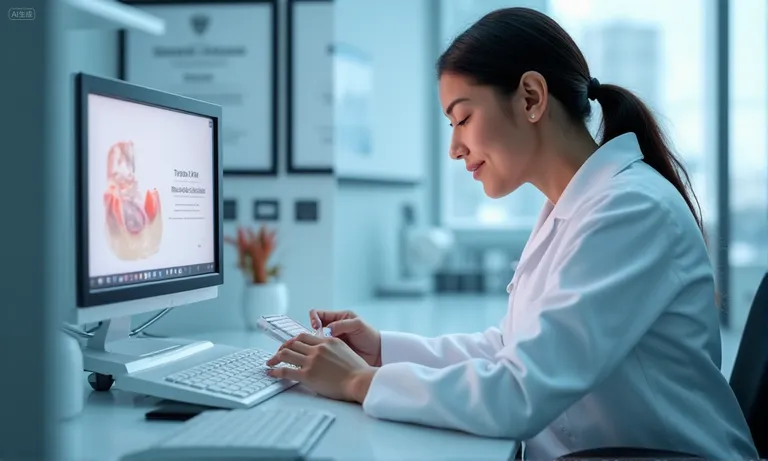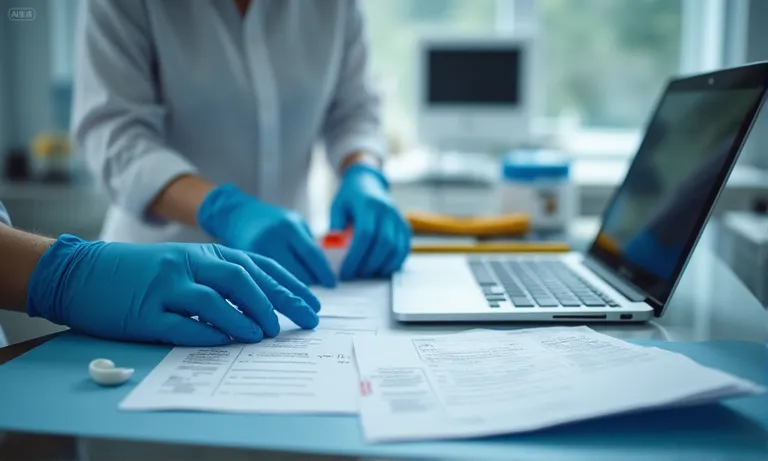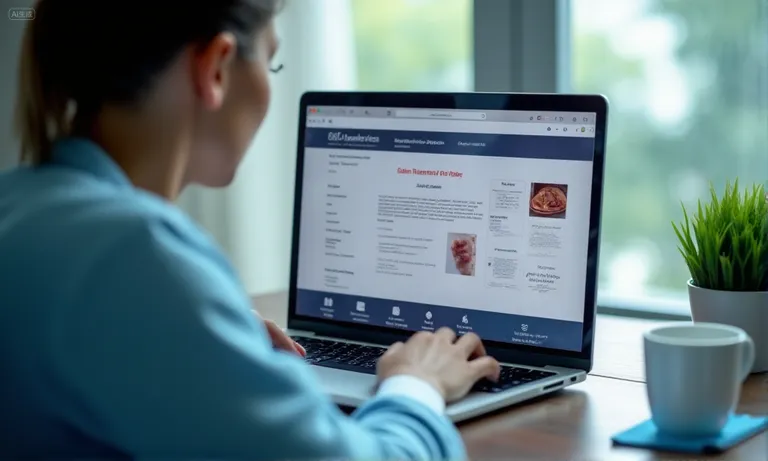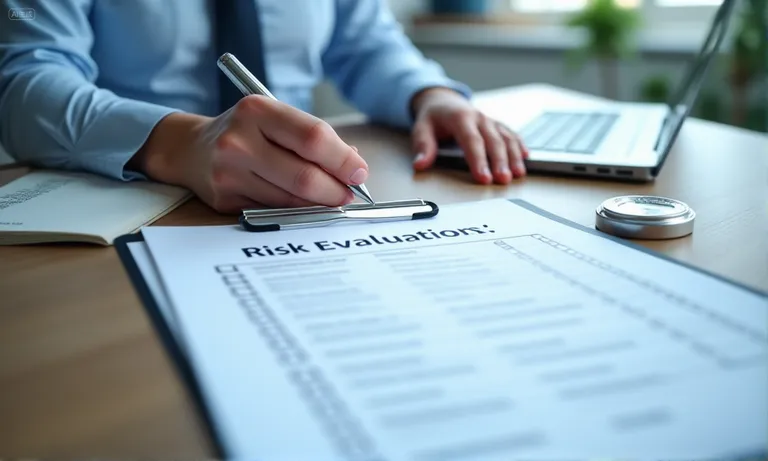Verifying the quality of a dental lab goes beyond pricing—it requires clear documentation and recognized certifications that demonstrate compliance with international standards and consistent production workflows. Buyers who check these records gain objective proof that a lab can deliver predictable, compliant outcomes across both restorative and implant cases.
Key focus areas for procurement teams:
- Documentation – SOPs, QA reports, traceability logs, remake policies
- Certifications – ISO 13485, CE marking, FDA registration, NBC/NADL, local licenses
- Technician qualifications – training records, credentials, continuing education
- Materials & equipment – FDA-certified materials, certificates of origin, maintenance logs
- Portfolio & feedback – clinical case examples, aesthetics, testimonials, peer reviews
- Technology adoption – CAD/CAM integration, 3D printing, lab management platforms
By systematically reviewing these elements, buyers can reduce remake risks, improve procurement confidence, and secure reliable long-term partnerships. The outcome is a transparent workflow, scalable production capacity, and a stronger foundation for outsourcing with trust and efficiency.
Why Documentation and Certifications Matter for Dental Lab Quality
Clear documentation and recognized certifications are the foundation for evaluating a dental lab’s reliability. They provide buyers with transparent proof of how the lab manages quality and ensure that processes comply with international healthcare standards. When labs can show complete records and valid certifications, buyers gain confidence that their outsourcing partner has systems in place to minimize risks and protect long-term collaboration.

dental-lab-quality-certification-check
How documentation creates transparency in workflow and quality control
Documentation makes a lab’s internal processes visible to external buyers. Production logs, standard operating procedures, and quality assurance reports reveal how each case is tracked and validated. This transparency allows buyers to see whether the lab follows consistent standards or relies on ad hoc practices. Without documentation, there is no clear way to verify how remakes are handled or whether workflow checks are applied across all cases.
Why certifications demonstrate compliance with international standards
Certifications such as ISO 13485 and ISO 9001 are internationally recognized signals that a dental lab follows structured quality management. They demonstrate that the lab’s systems have been independently audited against strict criteria, giving buyers assurance that compliance is not just claimed but verified. In international outsourcing, certifications reduce the risk of hidden quality gaps and allow buyers to compare labs on an equal basis.
Learn more about ISO 13485 for medical devices
The role of documentation and certifications in reducing cross-border outsourcing risks
Cross-border procurement adds layers of complexity—different regulations, shipping delays, and communication barriers. Documentation provides traceability in case products need to be rechecked, while certifications confirm the lab meets both domestic and international requirements. For example, when a European distributor collaborates with an overseas dental lab, CE marking and process records become essential safeguards against legal or compliance disputes. These measures turn potential blind spots into managed risks.
Together, documentation and certifications shift dental lab evaluation from subjective trust to evidence-based decision making. For buyers, especially those working with overseas suppliers, these elements serve as non-negotiable tools to ensure quality and reduce uncertainty. Raytops Dental Lab, for instance, integrates both structured documentation and international certifications into client-facing workflows, which helps buyers feel secure in long-term partnerships.
What Key Documents Should Buyers Review to Confirm Process Quality?
The most important documents buyers should review are standard operating procedures, quality assurance records, and traceability logs. Together, these files show how a dental lab organizes workflows, handles remakes, and tracks materials from start to finish. Reviewing them gives procurement teams objective evidence of whether the lab operates with consistent standards or relies on informal practices.

dental-lab-sop-quality-records
Standard operating procedures (SOPs), audit results, and submission guidelines
- SOPs describe every step of the restoration process, from receiving digital impressions to final delivery.
- Internal or external audit results prove the SOPs are not only written but also followed in practice.
- Submission guidelines show buyers how the lab requests case files and communicates technical details.
When these documents are missing, it signals a lack of consistency in the lab’s operations.
Quality assurance, corrective action, and remake/adjustment documentation
- QA reports record inspection checkpoints, helping buyers see whether each case passes defined quality gates.
- Corrective action logs track how errors are addressed, ensuring problems are solved at the root rather than repeated.
- Remake and adjustment records reveal whether remake rates are within acceptable industry ranges.
See NADL guidance on remake policies
Traceability records, production logs, and error tracking for dental restorations
| Document Type | Purpose for Buyers | Risk if Missing |
|---|---|---|
| Traceability records | Link materials (e.g., zirconia batch) to specific cases | Cannot identify source in case of recall |
| Production logs | Show sequence of steps and responsible technicians | No proof of accountability in workflows |
| Error tracking reports | Highlight recurring problems across batches | Issues may repeat unnoticed |
By verifying these three categories of documents, buyers can quickly determine if a lab is equipped with structured systems or if quality depends on chance. For example, Raytops Dental Lab routinely provides SOPs, QA reports, and traceability files to overseas clients as part of initial evaluations. This documentation helps buyers shorten their due diligence process and build confidence in long-term outsourcing.
Which Certifications Prove a Dental Lab’s Compliance and Quality Standards?
The most reliable certifications for dental labs are ISO 13485, ISO 9001, CE marking, FDA establishment registration, and national board certifications such as NBC or NADL. These credentials confirm that the lab has passed independent audits and aligned with international medical device regulations. For buyers, certifications act as efficient filters to distinguish regulated, process-driven partners from unverified labs.

dental-lab-compliance-certifications-overview
ISO 13485 vs. ISO 9001 for quality and medical device management
| Certification | Scope | Value for Buyers |
|---|---|---|
| ISO 13485 | Specific to medical devices; includes risk and regulatory controls | Ensures restorations meet healthcare-grade safety standards |
| ISO 9001 | General quality management standard across industries | Demonstrates structured processes; best when paired with device-specific certification |
Procurement leaders typically weigh ISO 13485 higher due to its medical-device focus. ISO 9001 adds confidence in consistency but should complement, not replace, 13485.
[SEE FDA’s DEVICE REGISTRATION AND LISTING REQUIREMENTS]
CE marking, FDA establishment registration, and MDR alignment
- CE marking confirms EU regulatory compliance under the Medical Device Regulation (MDR).
- FDA establishment registration shows the lab is listed in the U.S. regulatory system—necessary for legal distribution, though it doesn’t imply product approval.
- MDR alignment indicates awareness of evolving European compliance demands.
These credentials reduce delays during customs reviews and reassure buyers of regulatory readiness across markets.
National board certifications (NBC/NADL) and local licensing
Certifications from authorities like NBC or NADL signal adherence to professional standards of craftsmanship. Local licensing ensures the lab legally operates within its jurisdiction. While they differ by region, such credentials enhance buyer trust—especially when evaluating manufacturing partners across borders.
Leveraging certifications is a fast, evidence-based way for buyers to qualify dental lab partners. For example, Raytops Dental Lab maintains ISO 13485 certification and is duly registered with the FDA’s establishment listing system, helping overseas buyers streamline regulatory due diligence and move faster to procurement decisions.
How Do Technician Qualifications Reflect Process Quality?
Technician qualifications reflect lab quality by showing the depth of skills, certifications, and continuous training behind each restoration. Buyers who review staff credentials, education records, and association memberships gain clear insight into whether the lab can consistently deliver accurate, reliable outcomes. A qualified team lowers remake rates and ensures new techniques are integrated smoothly into production.

dental-technician-qualification-review
Credentials, training, and years of hands-on experience of dental technicians
- Formal credentials prove that technicians have achieved baseline competency through education and certification.
- Hands-on training across implant systems and restorative materials shows adaptability in complex cases.
- Years of experience signal familiarity with troubleshooting and maintaining consistency under pressure.
These factors are particularly relevant for overseas buyers who need assurance that skill levels match global expectations.
Continuing education and skill updates on new techniques and materials
- Course participation in new ceramic systems or digital workflows shows a commitment to staying current.
- Vendor-provided training on CAD/CAM software and 3D printing tools ensures correct use of advanced equipment.
- Annual refreshers prevent outdated practices from creeping into daily workflows.
Verifying staff certification or membership in professional associations
Professional associations such as the NADL or state dental boards maintain membership requirements that confirm ongoing competence. When labs provide evidence of staff certification or active membership, it demonstrates accountability to external standards. Buyers should also verify whether the lab subcontracts certain work; if technicians are not fully qualified, the risk of inconsistent outcomes increases, especially in implant cases.
Technician qualifications directly translate into quality assurance for buyers. By confirming staff certifications and ongoing training, procurement teams reduce uncertainty about skill gaps. Raytops Dental Lab highlights technician credentials and continuous education records during onboarding with new clients, making it easier for buyers to trust that their cases are handled by skilled professionals.
How Do Material and Equipment Records Demonstrate Reliability?
Material and equipment records demonstrate reliability by providing proof that every component used is certified, traceable, and manufactured with calibrated technology. Buyers who review these records gain assurance that restorations are made from safe, compliant materials and that advanced machinery is properly maintained to deliver consistent results.

dental-lab-materials-equipment-logs
FDA-certified materials, alloy batch certificates, and zirconia lot traceability
- FDA-certified materials ensure that metals, ceramics, and polymers meet biocompatibility requirements.
- Batch certificates for alloys document purity and mechanical properties, giving buyers transparency on material origin.
- Zirconia lot traceability allows clinics to link each restoration to the exact production batch in case of performance issues.
These files are critical in high-value implant cases, where failure due to poor material quality can lead to reputational and legal risks.
Certificates of origin for alloys, zirconia, and implant components
- Request certificates of origin to confirm the source of alloys, zirconia, and implant components.
- Check documentation consistency—each case should include matching lot numbers and supplier details.
- Verify supplier credibility by ensuring the origin certificates are backed by reputable manufacturers.
Regular maintenance and calibration logs for CAD/CAM and 3D printing equipment
| Record Type | Why It Matters | Buyer Risk if Missing |
|---|---|---|
| CAD/CAM calibration logs | Prove scanners and mills are regularly adjusted | Inaccurate fits, higher remake rates |
| 3D printer maintenance reports | Confirm resin tanks and printers are serviced | Production stoppages or model distortions |
| Annual equipment inspections | Ensure machines meet manufacturer standards | Equipment drift, unpredictable outcomes |
Reviewing material and equipment records is one of the most effective ways to evaluate whether a lab can deliver consistent quality at scale. Overseas buyers often rely on this documentation to verify that production is not only digital but also accountable. Raytops Dental Lab integrates certificates of origin with case files and shares equipment calibration logs with clients upon request, offering procurement teams evidence that both materials and machinery are managed to international standards.
How Can Reviewing Portfolios and Peer Feedback Validate Quality?
Reviewing a lab’s portfolio and gathering peer feedback validates quality by showing how the lab’s work performs in real cases, not just on paper. Portfolios demonstrate aesthetics and technical ability, while referrals and testimonials confirm how consistently the lab delivers for other clinics. Peer evaluations reduce uncertainty by providing evidence from professionals facing the same challenges as the buyer.

dental-lab-portfolio-and-client-feedback
Assessing lab portfolios for aesthetics, functional fit, and production consistency
- Aesthetics: Portfolio photos show whether the lab can match natural shade and contour.
- Functional fit: Examples of implant-supported cases reveal if restorations integrate smoothly with abutments.
- Consistency: Multiple case studies across time prove the lab maintains standards rather than excelling only in selected samples.
Evaluating these aspects helps buyers see beyond marketing claims to actual performance.
Requesting referrals, testimonials, and third-party performance evaluations
- Ask for referrals from clinics that have worked with the lab on similar case volumes.
- Review testimonials to identify patterns—such as quick turnaround or low remake rates.
- Request performance evaluations from distributors or partners who can provide independent data.
Using peer feedback and client case studies to verify real-world outcomes
Peer-to-peer feedback, whether through professional forums or direct conversations, adds unfiltered insight into a lab’s reliability. Client case studies further demonstrate how the lab responds under real-world conditions, including handling complex or urgent cases. Unlike certificates or documents, these narratives provide a dimension of trust that is rooted in lived experience and collaboration.
For buyers, combining portfolio evidence with authentic peer feedback creates a stronger foundation for decision making than documents alone. Raytops Dental Lab often shares digital portfolios and connects prospective clients with existing overseas partners who can speak about long-term collaboration, helping buyers validate quality through both visuals and first-hand testimonials.
What Role Does Technology and Innovation Play in Verifying Lab Quality?
Technology and innovation play a key role in verifying dental lab quality because they make workflows more measurable, transparent, and repeatable. When a lab integrates digital systems, 3D printing, and cloud-based collaboration tools, buyers can clearly see whether quality is maintained at scale. These innovations provide data-backed assurance that the lab is investing in accuracy and long-term reliability.

dental-lab-digital-innovation-quality-check
CAD/CAM integration and digital workflow adoption across systems
- Digital scanning and milling improve precision compared with manual workflows.
- System integration ensures design files flow directly into production with minimal data loss.
- Audit trails in CAD/CAM software create verifiable records that buyers can review.
These factors make digital labs easier to assess because every step leaves a traceable record.
Use of 3D printing for models, guides, and dental appliances
- Models: 3D printed models allow buyers to confirm dimensional accuracy quickly.
- Guides: Surgical or placement guides demonstrate how the lab supports complex implant workflows.
- Appliances: Appliances such as splints highlight the lab’s ability to expand into diverse product lines with consistent output.
Cloud-based lab management software, case-sharing portals, and intraoral scan compatibility
Cloud-based platforms allow clinics and labs to share case data securely and monitor progress in real time. Case-sharing portals reduce miscommunication, while compatibility with intraoral scanners ensures smooth digital handoffs from chairside to production. Buyers evaluating these systems can judge whether a lab is capable of transparent collaboration and adapting to modern dental technology ecosystems.
For procurement managers, technology is not just an efficiency booster—it is a way to validate whether a lab is capable of reliable, scalable, and transparent production. Raytops Dental Lab incorporates CAD/CAM integration, 3D printing, and cloud-based case portals into its workflows, making it straightforward for overseas buyers to verify quality through digital evidence rather than promises.
How Can Buyers Use Documentation and Certifications to Reduce Risks?
Buyers can reduce risks in outsourcing by using documentation and certifications as objective tools to screen suppliers, confirm quality processes, and prevent costly remakes. When incorporated into procurement checklists, these records provide clear benchmarks that separate reliable long-term partners from unverified operators.

dental-lab-risk-reduction-checklist
Lowering remake rates and client complaints through verified QA processes
- QA documentation ensures checkpoints are consistently applied.
- Corrective action records reveal how issues are resolved at the root.
- Remake and adjustment logs help buyers track whether rates are within acceptable limits.
Consistently low remake rates directly reduce financial loss and client dissatisfaction.
Using certifications as a screening tool for reliable long-term partners
- Identify must-have certifications such as ISO 13485 or CE marking for regulated markets.
- Request proof of current validity and confirm audits are up to date.
- Compare suppliers by certifications held, reducing time spent on trial-and-error vetting.
Incorporating documentation and certifications into procurement evaluation templates
| Evaluation Category | Documentation Needed | Why It Reduces Risk |
|---|---|---|
| Process quality | SOPs, QA reports, error logs | Ensures consistent workflow checks |
| Material traceability | Certificates of origin, batch records | Prevents hidden supply chain risks |
| Compliance | Valid ISO, CE, FDA registrations | Confirms lab meets international standards |
When used systematically, documentation and certifications become more than paperwork—they become decision-making safeguards. For overseas buyers, these tools simplify cross-border sourcing by offering proof of compliance and structured quality management. Raytops Dental Lab actively shares certifications and QA documentation with procurement teams, helping clients reduce risks while accelerating approval for long-term collaboration.
Conclusion
Documentation and certifications transform dental lab sourcing from guesswork into evidence-based decision making. By verifying processes, materials, technician credentials, and technology standards, buyers can reduce risks and secure reliable outcomes across borders. These records also make long-term partnerships easier to manage by aligning both compliance and quality expectations. For procurement teams, the most effective strategy is to treat documentation and certifications as practical safeguards rather than formalities. As an overseas dental lab, Raytops Dental Lab supports this approach by making records transparent and certifications accessible, helping buyers feel confident in scaling cooperation with trust and clarity.


